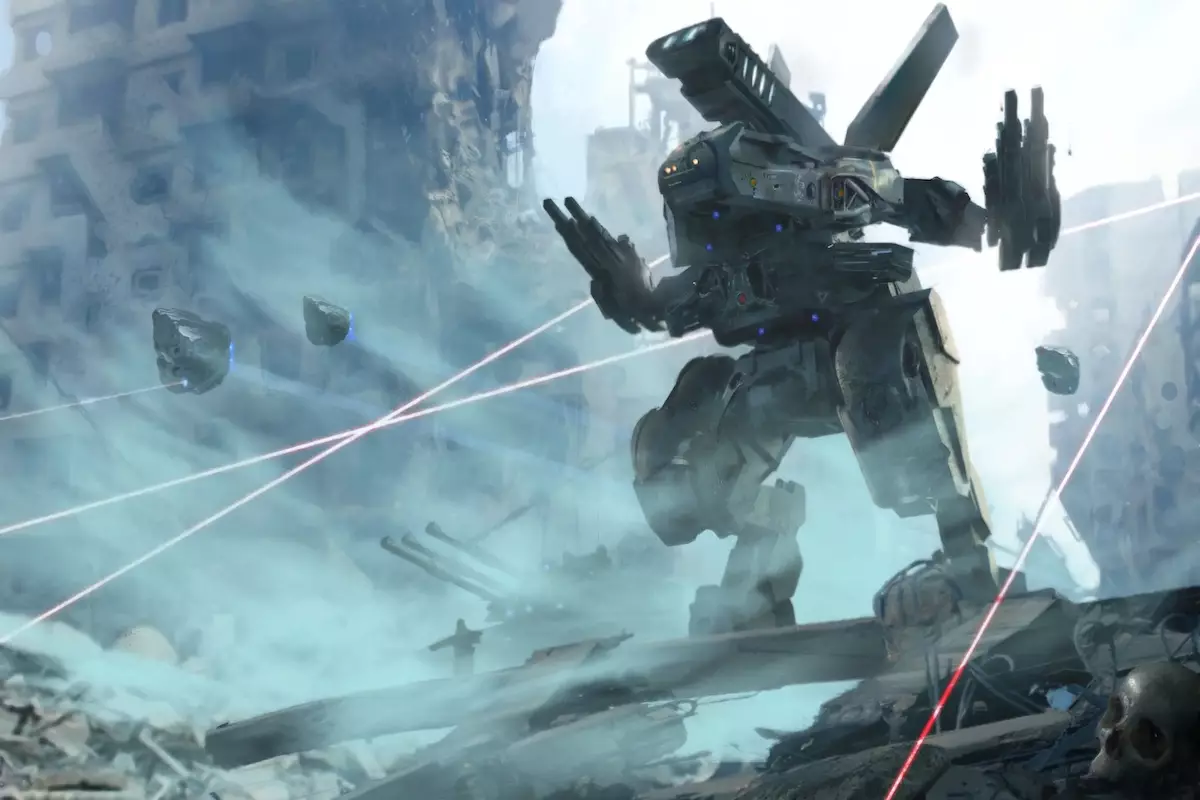In a world saturated with gaming options, few titles manage to stand out as effectively as MetalCore. This mech combat game immerses players in a richly designed post-apocalyptic landscape, where strategic fighting with massive robots not only captivates but also stimulates competitive engagement. Offering a unique blend of first-person shooter (FPS), vehicular mayhem, and large-scale warfare, MetalCore’s distinctive feature lies in its integration of Web3 elements. Players are equipped not only to partake in intense combat scenarios but also to own and trade in-game assets, including mechs, weapons, and land, as non-fungible tokens (NFTs). Such a setup introduces a novel economic dimension, allowing players to actively engage in an evolving gameplay ecosystem.
MetalCore’s recent transition to the Solana blockchain is driven by a need for improved performance and speed. As demand for more seamless gaming experiences intensifies, this strategic migration signifies an unprecedented commitment to enhancing player experience. Solana’s blockchain is renowned for its remarkable throughput, which facilitates rapid transactions—an indispensable feature for a game that hinges on real-time interactions. Operating with a staggering 3,000 transactions per second (TPS), Solana ensures that lag and latency become obsolete, allowing players to experience uninterrupted action during gameplay.
Moreover, the integration of Solana Labs’ GameShift platform addresses friction often experienced by players navigating between traditional Web2 and innovative Web3 gaming. This seamless transition makes it easier for newcomers to adapt to blockchain elements without significant barriers, heralding a more inclusive environment.
What makes this transition even more exciting for the gaming community is Solana’s ongoing commitment to further enhancements, including the anticipated Firedancer upgrade set for 2025. This upgrade is expected to bolster Solana’s scalability and performance, promising even lower transaction costs and greater efficiency for MetalCore as user demand escalates. Consequently, players can anticipate an uninterrupted gaming experience, even as the player base expands alongside the game’s growth.
Importantly, this transition aligns MetalCore not merely for immediate benefits but establishes a framework for sustainability and long-term development. By leveraging Solana’s infrastructure, the development team is positioned to focus on innovating game mechanics and enriching content instead of grappling with technical limitations.
Transitioning into a high-velocity gaming environment enhances the overall experience for MetalCore players. Faster transaction times and negligible fees signify that players can act instinctively without worrying about disruptions that hamper traditional gaming platforms. In a combat scenario where milliseconds can determine the outcome of a match, such improvements cannot be understated.
Furthermore, the capabilities of Solana not only elevate gameplay but also revolutionize in-game asset management. Players will have the opportunity to convert traditional in-game items into Web3 assets, unlocking an entirely new layer of economic interaction. This increase in autonomy over digital assets empowers gamers and fosters a more active investment in the community and the game itself.
As excitement builds around the upcoming launch of MetalCore’s season 2 on Solana, players are eager to witness how the integration will materialize. The migration also allows existing players to transfer their assets and fully utilize the enhanced features available within the new ecosystem. With such a significant evolution, expectations for gameplay and community engagement are climbing higher than ever.
Ultimately, MetalCore’s shift to Solana is a paradigm shift aimed at enhancing efficiency and longevity for the gaming experience. By harnessing the benefits of advanced blockchain technology, MetalCore positions itself as a leader in the blockchain gaming industry. Players are not just spectators but stakeholders in a vibrant digital economy, and such a future bodes well for communal growth.
As the game continues to evolve, staying attuned to the feedback of its dedicated player base will be crucial. MetalCore’s commitment to fostering a dynamic environment stands to reshape how players interact within the universe of gaming, promising an engaging and progressive avenue for connectivity and skill.
MetalCore’s migration to Solana is not just about performance; it signifies a commitment to shaping the future of gaming, making it a more enjoyable, seamless, and rewarding experience for players old and new alike. The horizon looks promising, both for the developers and the community, as they venture into this new era of blockchain-infused gaming.

